37+ SAMPLE Operations Meeting Minutes
-
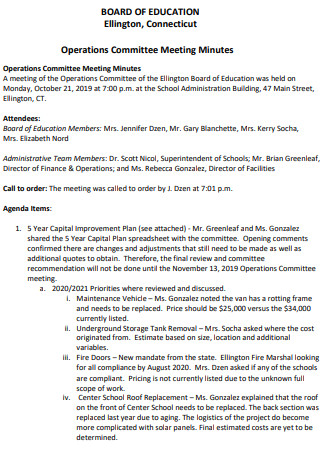
Operations Meeting Minutes Template
download now -
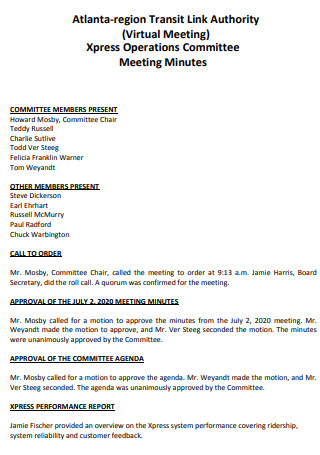
Xpress Operations Meeting Minutes
download now -
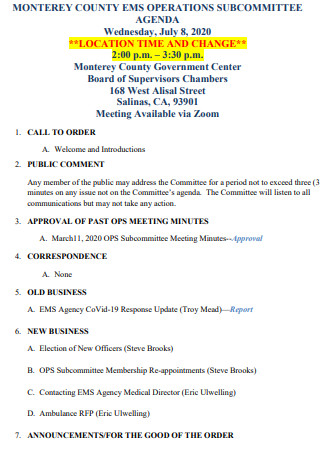
Operations Subcommitee Meeting Minutes
download now -
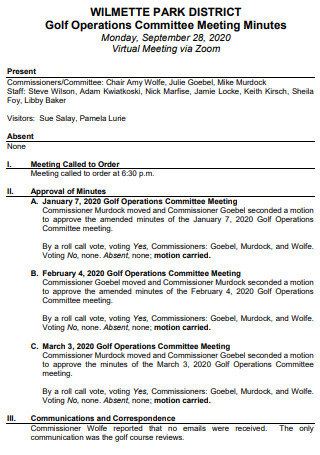
Golf Operations Meeting Minutes
download now -
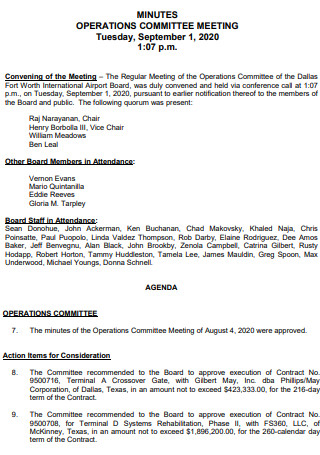
Formal Operations Meeting Minutes
download now -
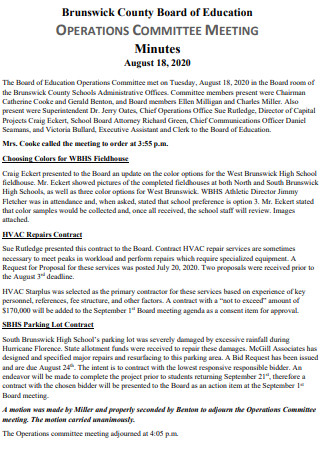
Board of Education Operations Meeting Minutes
download now -
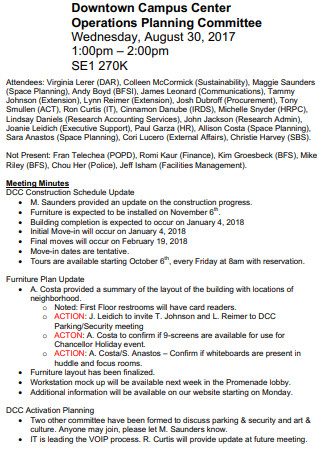
Campus Center Operations Meeting Minutes
download now -
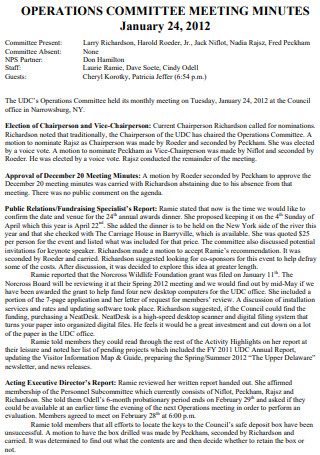
Campus Center Operations Meeting Minutes
download now -
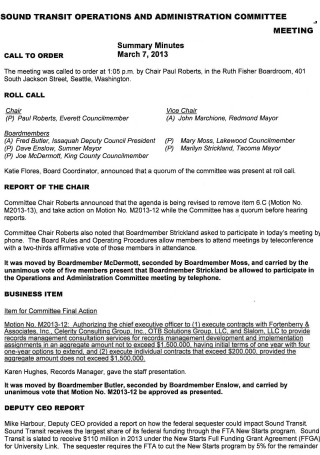
Operations And Administration Meeting Minutes
download now -
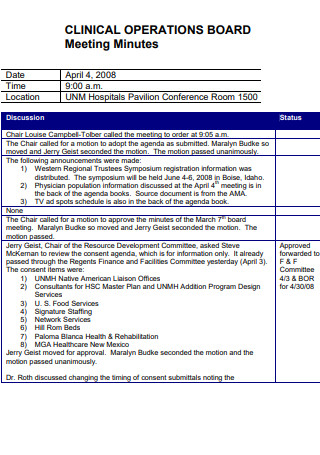
Clinical Operations Meeting Minutes
download now -
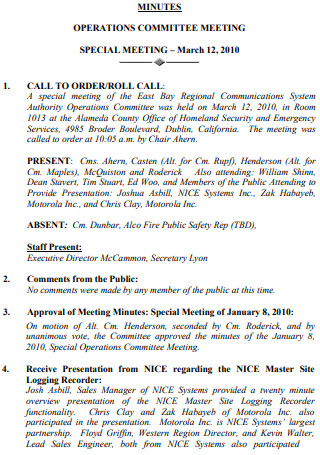
Operations Special Meeting Minutes
download now -
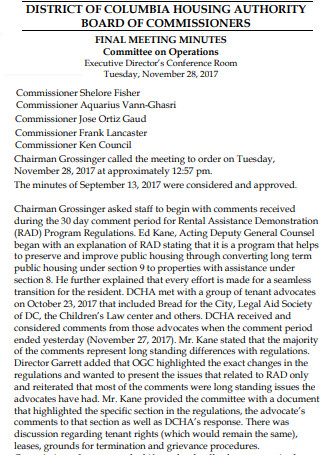
Final Operations Meeting Minutes
download now -
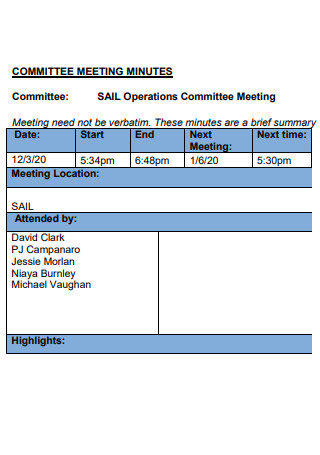
Sail Operations Meeting Minutes
download now -
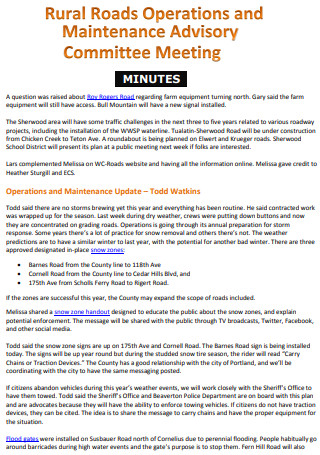
Rural Roads Operations Maintenance Meeting Minutes
download now -
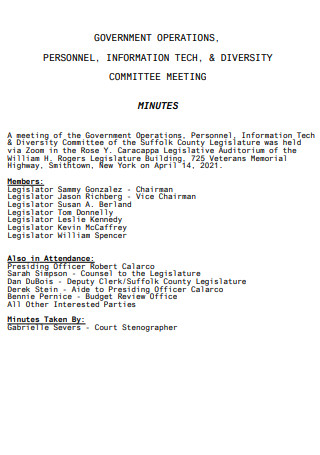
Government Operations Meeting Minutes
download now -
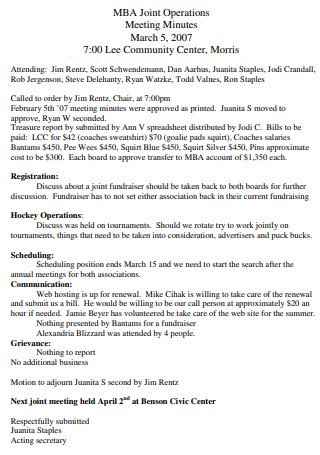
MBA Joint Operations Meeting Minutes
download now -
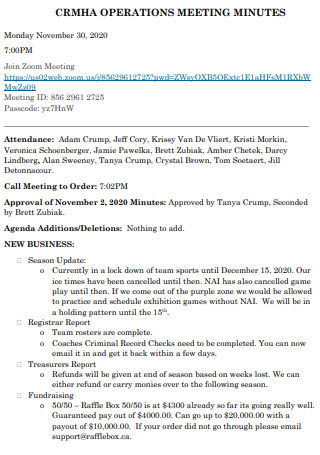
Business Operations Meeting Minutes
download now -
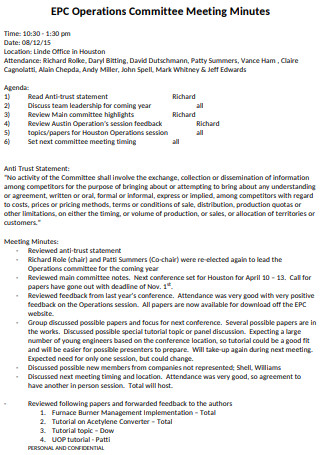
Sample Operations Meeting Minutes
download now -
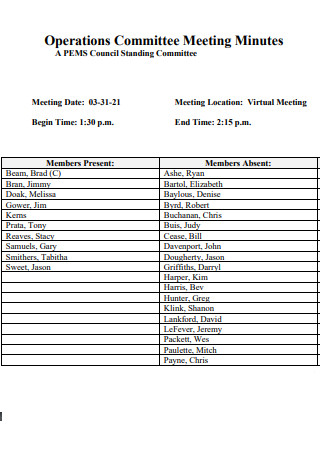
Medical Service Emergency Operations Meeting Minutes
download now -
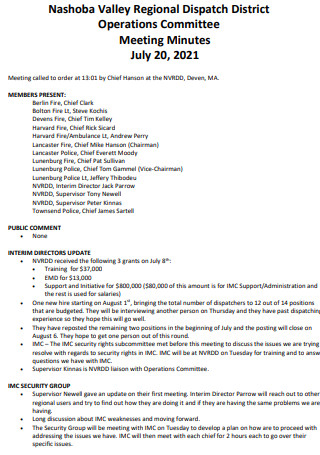
District Operations Meeting Minutes
download now -
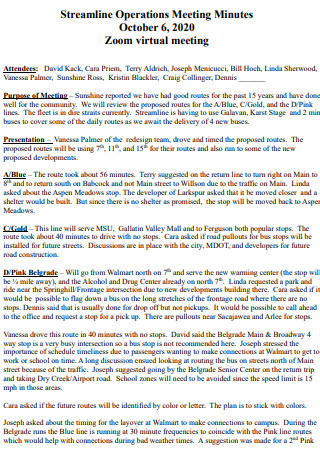
Streamline Operations Meeting Minutes
download now -
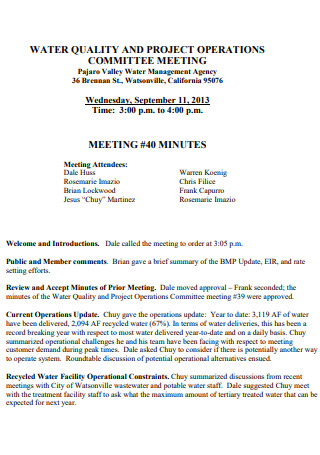
Water Quality Project Operations Meeting Minutes
download now -

System Operations Meeting Minutes
download now -
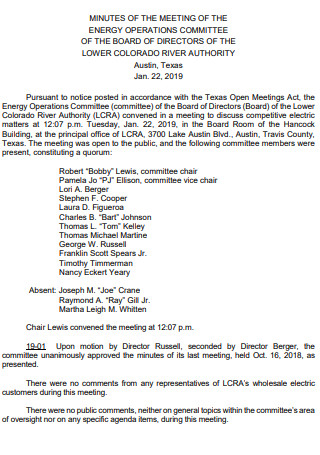
Energy Operations Meeting Minutes
download now -
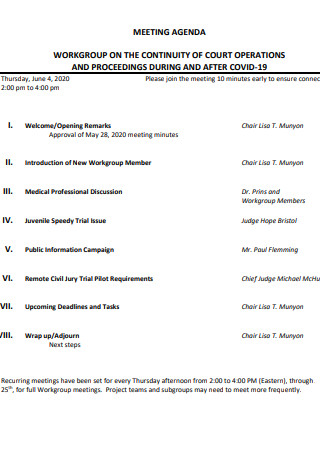
Court Operations Meeting Minutes
download now -

Engineering And Operations Meeting Minutes
download now -
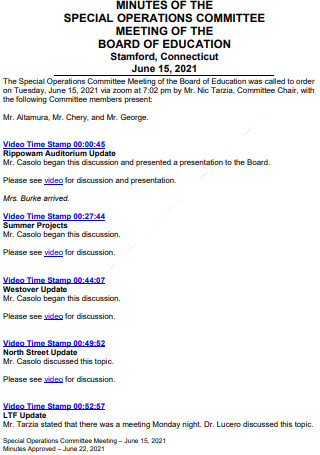
Special Operations Meeting Minutes
download now -
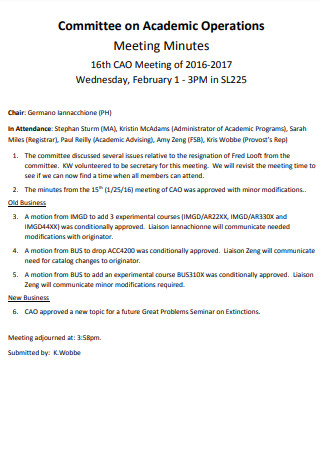
Committee on Academics Operations Meeting Minutes
download now -
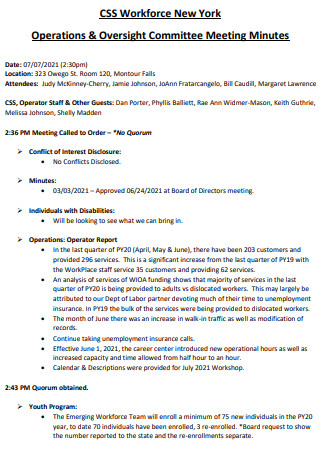
Operations And Oversight Meeting Minutes
download now -
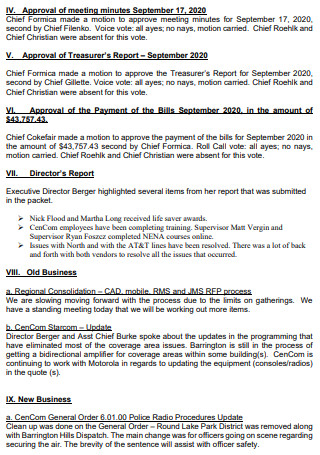
Chiefs Operations Meeting Minutes
download now -
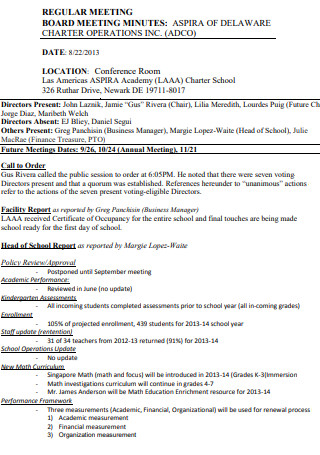
Charter Operations Regular Meeting Minutes
download now -
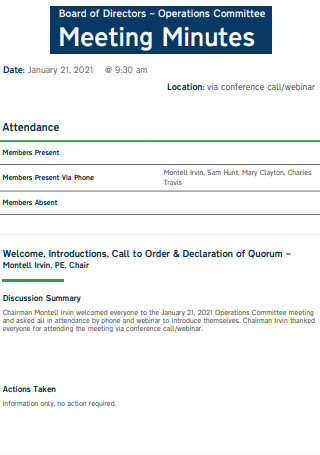
Board of Directors Operations Meeting Minutes
download now -
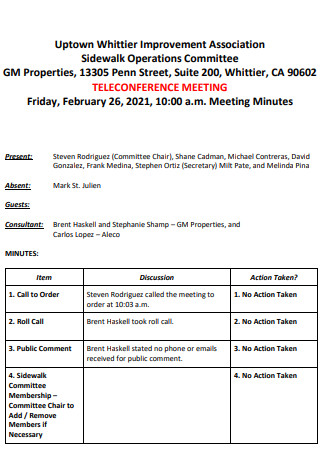
Sidewalk Operations Meeting Minutes
download now -
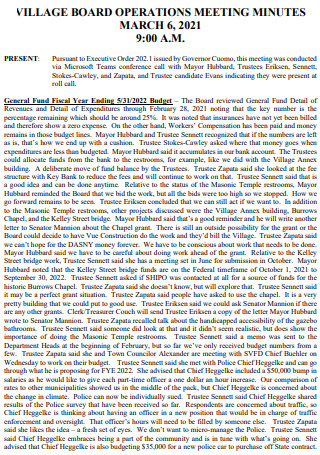
Village Board Operations Meeting Minutes
download now -
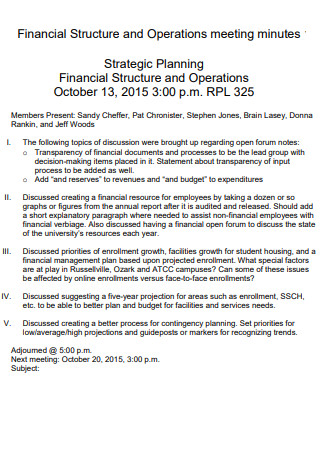
Financial Structure And Operations Meeting Minutes
download now -
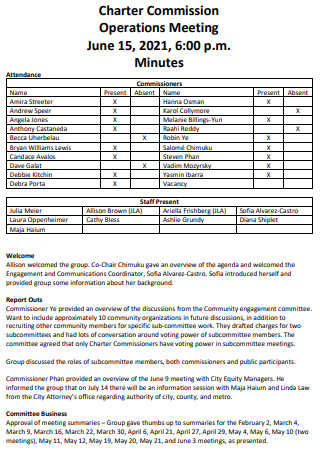
Charter Commission Operations Meeting Minutes
download now -
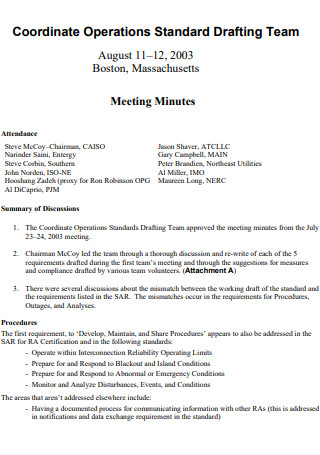
Coordinate Operations Meeting Minutes
download now -
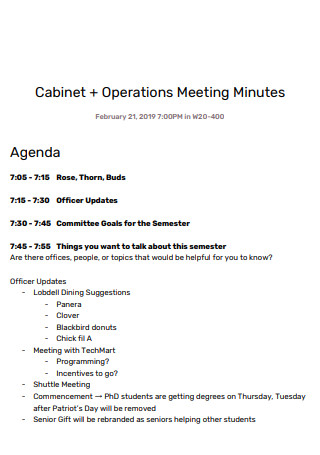
Cabinet Operations Meeting Minutes
download now
FREE Operations Meeting Minutes s to Download
37+ SAMPLE Operations Meeting Minutes
What is an Operations Meeting Minutes?
What is Operations?
Ways to Make an Operations Meeting More Effective
How to write an Operations Meeting Minutes
FAQs
What is the role of an Operations Manager?
How long does an Operations Meeting last?
Can operations meetings be done daily?
What is an Operations Meeting Minutes?
In order to understand all about the minutes of an operations meeting, we should familiarize ourselves with the topic of what goes on inside an operations meeting and what it is all about. An operations meeting is a type of meeting held for the purpose of discussing the procedures or operations of the team. To put it in other terms, it is a formal assembly that involves both the employees and the management department with the goal of discussing the operations and functions of the business team. This meeting usually allows the employees to discuss problems or concerns relating to workflow and to develop action plans in order to counteract potential issues that could arise. An operations meeting minutes is a legal document that is noted down by the secretary or the meeting’s notetaker and should contain the decisions made or actions taken by the operations team during the duration of the meeting.
What is Operations?
Operations are defined as the series of actions, decisions, and strategies that are undertaken by the staff and the management of a company or business that are necessary for running it or generating income from it. The decisions that are taken usually affect the overall production, distribution, service, and management of the business. It also refers to the management of your business’s behind-the-scenes movements in order for it to run efficiently and without hitches.
Here are some examples of how operations are like in various businesses:
Ways to Make an Operations Meeting More Effective
Nobody wants a meeting, let alone an Operations Meeting to go on and on for hours with no goal achieved at the end. It is a total waste of time. Here are some ways an Operations Meeting can be more effective and not draining for the participants:
How to write an Operations Meeting Minutes
Step 1. Identify what things to write, and the things to avoid.
Different kinds of organizations, companies, or businesses have different methods of taking down minutes during their operations meeting. So it is important for the secretary or the assigned notetaker to know what to write and what not to write. The focus should be directed to what the participants of the operations meeting are discussing, and the secretary should be able to differentiate on what to take down (ex. names of the staff that are invited, whether present or not, venue of the meeting, decisions made, recent cost reports in the operations, additions to the agenda, recent trends, etc.) and what not to take down (ex. confidential matters, personal problems, side comments, and personal opinions, etc.)
Step 2. Know when and how to listen.
It is also important to know when should the secretary or scribe simply listen to the presenting speaker. Once he/she is confident to know what to write down in the minutes, the best option is to simply listen and concentrate on what topic the speaker is discussing. The best minute takers are usually really good listeners, too. It also ensures that the flow of the meeting goes on smoothly, and with little to no interruptions. In turn, there is a possibility that all agendas of the operations meeting are properly covered.
Step 3. Write objectively and properly.
As the secretary or the scribe begins to take down meeting notes for the minutes of the operations meeting, it is important to know that this should be done in an objective manner. Personal takes or opinions regarding the topic being presented or even opinions about the client should be completely left out of the notes, or if possible, written on a completely different page, away from the main notes for personal purposes. The secretary or scribe should also take note of the action items and the procedures made by the operations manager and the agreed actions to take by the entire ops team. If the minutes are just to be taken down by hand, it is also important that the handwriting is clear enough to read. The final document being produced should be written empty of bias. Since the final document has legal liability, it is also important to keep the information written on the minutes as basic as possible to avoid placing the entire business operation or company into unnecessary legal trouble.
Step 4. Finalize the minutes and distribute.
Once the note-taking process is finished and the meeting is adjourned, then the next step is getting the notes transferred or encoded into a formal, essential document while everything is still fresh in the mind. If the secretary prefers to have the meeting minutes written by hand, ensure that there are no unclear terms and that the handwriting is consistently readable. After, the secretary or the notetaker should verify that everything that is encoded in the final minutes document is factual and matches with what was discussed during the operations meeting proper. The secretary should also ask for any follow-up items during post-meeting. When everything is finalized, the formal minutes document should also be distributed to the executive department of the company or business organization, and to anyone with approval to receive the minutes of the meeting.
FAQs
What is the role of an Operations Manager?
The role of an Operations Manager is to oversee the organizational movements and tasks of his/her respective business, government agency, non-profit group, company, and organization. Operations Managers hire, train personnel, and manage quality control and assurance programs, among other things. They are ultimately responsible for the efficient running and increasing the overall productivity and profitability of the group they are managing, whether it is an agency, a business, or even a small group.
How long does an Operations Meeting last?
It depends on the agenda of said meeting. Often, weekly morning operations meetings typically last for only 10 to 20 minutes as the participants still have a whole workday to look forward to. Some smaller teams, however, can afford to run a meeting that can last as short as 5 minutes. If you typically find that your routine morning operations meeting lasts for more than 30 to 45 minutes, then you should communicate about a possible agenda revision to remove some topics that warrant an entirely different discussion. A weekly morning operations meeting should be short, but still effective. More long-term issues or concerns can be forwarded to a different kind of meeting.
Can operations meetings be done daily?
Yes, since the operations of some organizations are not reliable enough to warrant just a weekly meeting. The difference between a daily operations meeting from a weekly one is that the daily meeting should not be done on the start of the workday. It can be held midday so an ample schedule for maintenance and turnaround for the next day is allotted properly. Daily operations meetings don’t need to be lengthy, as it only typically covers topics such as the things accomplished the previous day and the things that are currently being worked on during the present day.
Operations meetings are vital to keeping the efficiency of the organization or the company’s current business at an optimal level, and also allows the chance to have discussions on how to further improve how things are being run. During meetings, it is also necessary to note down what decisions are being made in order to have a future reference to compare whether the targets were met or not, whether the plans were being executed properly, and whether the projects being implemented are still profitable. For your reference, there are many sample templates linked above for you to use as a reference.
